What Was Nikon's First Autofocus Camera
The Nikon L35AF: Still Brilliant Afterwards 37 Years
Nikon's 35mm picture point-and-shoot however dazzles nearly 4 decades later
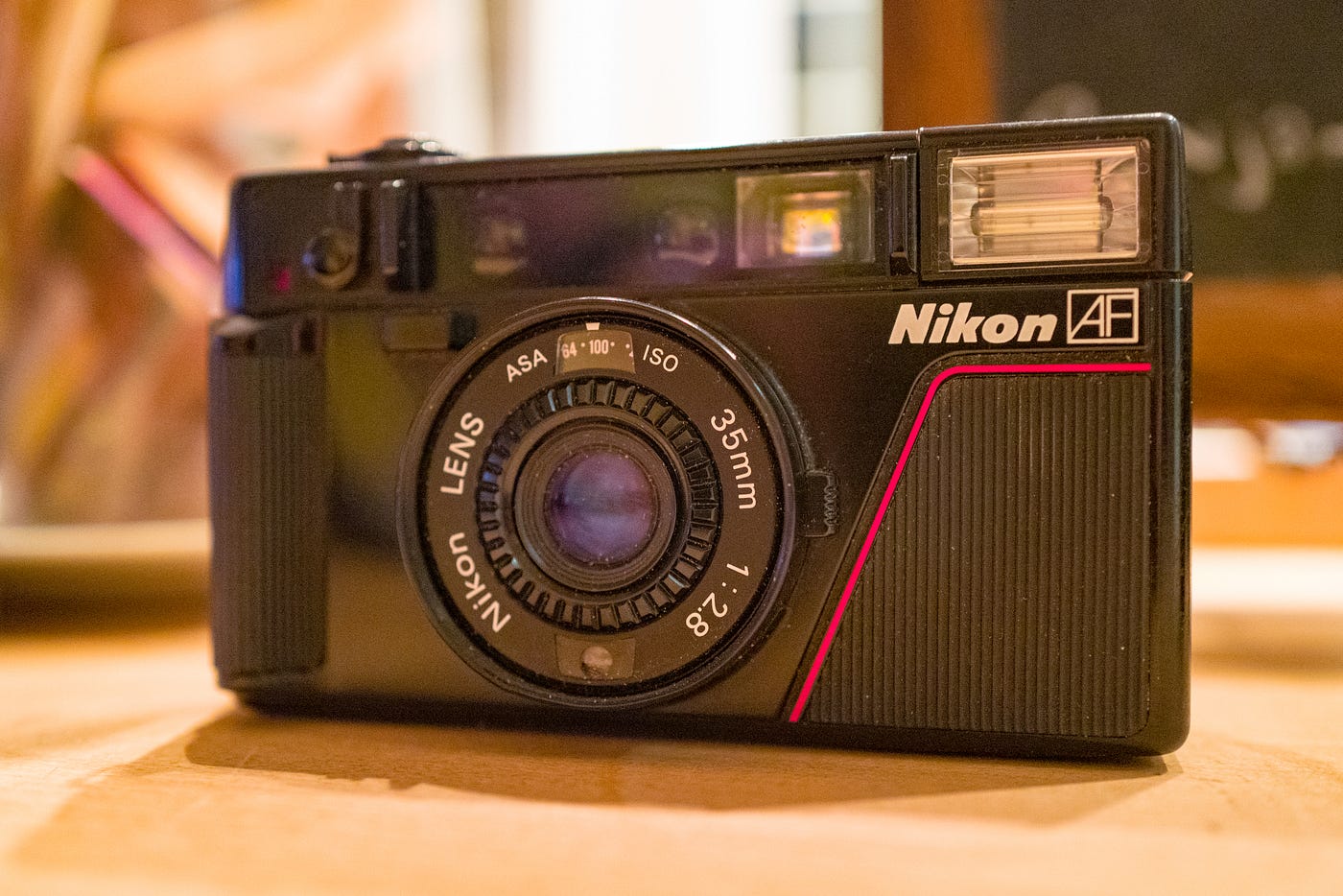
Call up of some things from the 1980s. How about the walkman? VCRs? Rick Astley?
Most haven't' held up all that well. Rick is still rolling people all over the Internet, simply other 1980s technologies have faded abroad into the sands of time. The VCR has a retro appeal, but my Bluray actor (or streaming Roku box) is much better.
At least i affair from the 1980s has held up extremely well, though. Its cameras.
The Nikon L35AF is a perfect example. It's a meaty point and shoot rangefinder, originally released in 1983. It has the distinction of being the get-go Nikon point and shoot camera with automobile focus, a major pace towards the digital cameras (and phone cameras) of today.
With the offset Nikon autofocus — and a system designed 37 years ago — you'd call back the L35AF's focus would be pretty rudimentary. But it's not. Somehow, the camera'south autofocus capabilities are absolutely brilliant. I've shot hundreds of photos with mine, then long equally I was within the proper distances, I've never seen it miss focus. That'south amend than tin be said for the $4k+ Nikon DSLRS of today.
Lots of other things virtually the L35AF are bright besides. The best matter, though, is the camera'due south lens. Today'due south point and shoot cameras have rudimentary lenses — or fifty-fifty (gasp) plastic ones!
Not then with the L35AF. The photographic camera has a 35mm, 5 element lens. That'south some serious engineering for a point and shoot. And it's fast, too, with an F2.8 aperture that lets in loads of calorie-free for cameras in its class.
The lens is super precipitous, too, peculiarly for a camera that's nearly 4 decades old. It'due south this tiny, virtually perfect 35mm beauty that'southward made the L35AF a scrap of a collector's item (though certainly not on the level of the fabled MJU II).
Circles and Boxes
Also in the category of not-an-MJU Ii? The L35AF'due south course cistron and pattern. This looks and feels like a 1980s device. It'south a marvel of miniaturization for its fourth dimension — all the lens components, pic, electronics, etc. fit into a "tiny" form that'due south about 5 inches long, three high and ane deep.
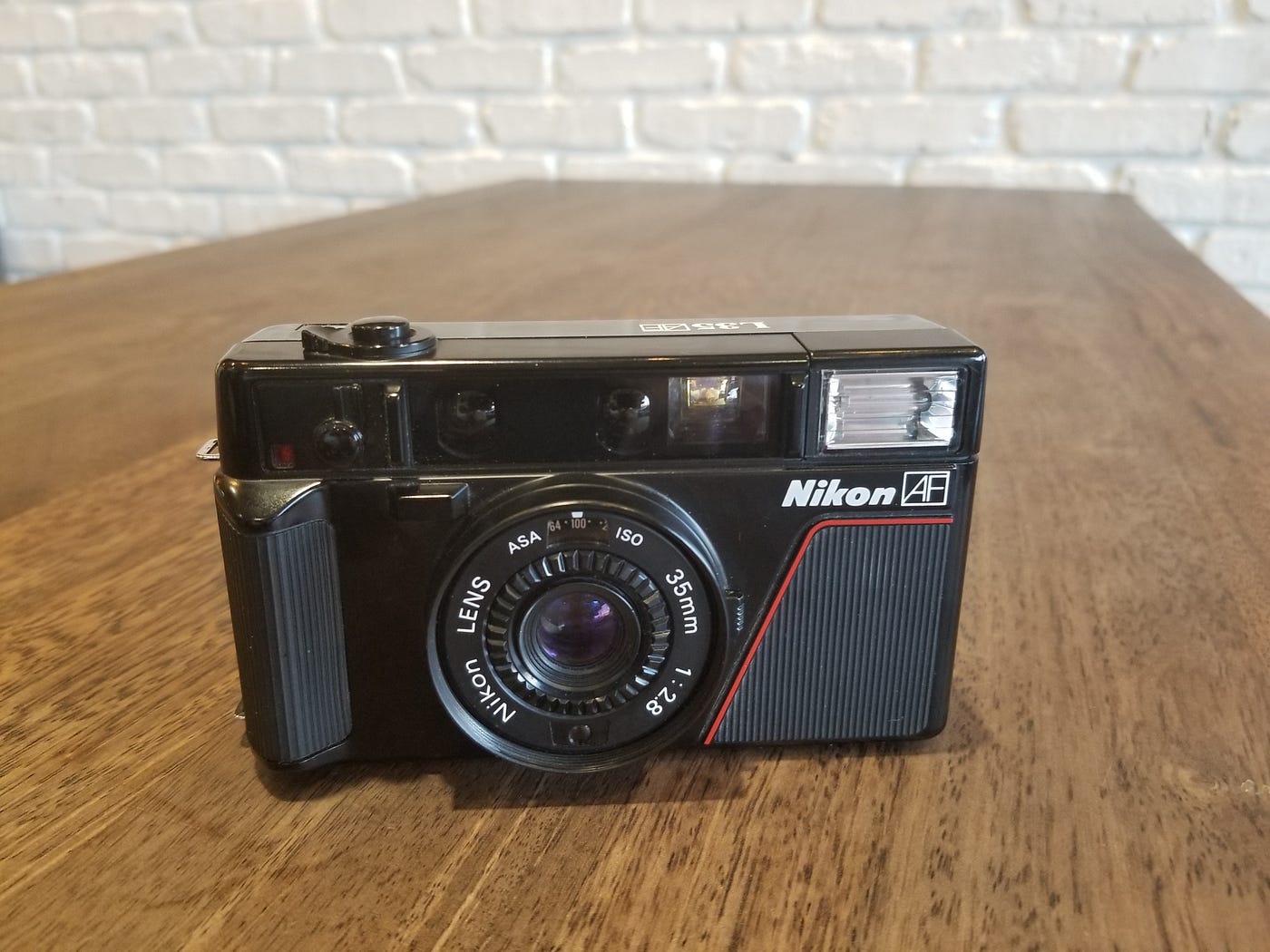
Note that I tin can confidently give (approximate) dimensions in terms of a rectangle because the L35AF is one — confidently and unapologetically. This is definitely a 1980s gadget! In that location'due south none of that 1990s curviness and rounded edges — everything about the camera is a series of little nested squares and circles, from the rangefinger elements to the flash to the lens assembly and the body itself.
I honey the fashion it looks — it's extremely functional, and no ane volition mistake it for a modern retro-chic digital photographic camera. This thing is conspicuously analog. That initial impression is enhanced with a behemothic blood-red stripe downwardly the forepart of the photographic camera.
In contrast to today'southward subtle, understated branding (Leica has a version of the Q where you pay more than to remove their iconic reddish dot), Nikon manages to cram their make proper name onto the front of the L35AF twice. As if all that isn't 80s enough, in that location's some textured rubberish grip areas on both sides of the photographic camera.
It's charming, very much of its time, and absolutely won't fit in your pocket. But it's also easy to hold, hard to driblet, and has a certain elegance to its circles-and-squares design that's surprisingly timeless, especially for a mass-market plastic camera.
Pro-Ish
While information technology's a point-and-shoot with autofocus and very petty in the way of manual settings, the L35AF does include several helpful pro features which are defective in afterward signal-and-shoots.
For 1 thing, its lens accepts a 46mm filter, so you tin employ it for existent blackness and white shooting, or throw on a polarizer. And it meters through the filter, which is surprising and extremely helpful. It likewise has a manual setting for ASA, and ignores DX codes, and so you can button or add exposure compensation by setting the ASA dial nevertheless you want.
ASA goes upwardly to 1000, too. This is a rarity for a point-and-shoot, and allows you to button a 400 speed film 1.5 stops or shoot with higher speed films like Portra 800.
In that location'southward also a petty lever on the side that allows you to tweak the exposure to become a fill flash. And when the photographic camera motorcar rewinds, it leaves a niggling fleck of leader poking out of the film canister, which is extremely helpful if you want to develop your own motion picture and don't relish reaching into the canister with a leader puller.
Otherwise, this is a betoken and shoot in all its glory. Shutter speed, focus and discontinuity are set automatically. You do a one-half press on the button to set focus, and then wait through the viewfinder, which has a charming focus indicator with a swinging lever and little icons depicting a mountain, a group of people, etc. You and so practise a full press, and the L35AF does the residual.
That Battery Door Though…
While the build quality is by and large expert, in that location are a few major annoyances on the L35AF.
Ane is the power switch. It's very easy to plough on by error. And when the photographic camera is on, it's constantly drawing ability. You tin very easily kill batteries by letting it bounce around in a pocketbook. Luckily, it takes AAs, which you lot tin can get anywhere.
The flash is also a claiming. For some reason, Nikon decided that it should pop out of the camera in depression-light situations. This is a lot of retro fun — attempt to shoot in depression low-cal, and in that location's a satisfying click as the flash pops out and charges upwardly. It also allows y'all to disable wink by pushing it back in.
Simply it does make the flash vulnerable. I found that over time, the lilliputian release system for mine stopped working. I lost some shots in the dark because the wink tried to release, but didn't actually heighten or charge. Exist warned if yours is an older photographic camera and you lot plan to shoot in depression light.
And so there'south the bombardment door. This is the camera's Achilles heal. It was manifestly designed by a drunk engineer equally an reconsideration, likely every bit part of a contest for who could choose components with the lowest possible build quality and durability.
The residual of the photographic camera is plastic, only the bombardment door is actually plasticy. It's very badly built, and prone to breaking well before the rest of the camera. And once it's warped at all, the batteries won't engage properly, and the camera won't go ability. You lot have to hold the door in place manually, or the thing won't run at all.
It'southward the bombardment door that ultimately bricked my camera.
The Photos
So why endure this possibly game-ending issue? At that place are two reasons.
The beginning is the moving-picture show quality. The L35AF takes absolutely brilliant photos.
People love the MJU II. It's a bang-up camera, too, but I find its photos a bit flat and dull. They're passable, but the camera doesn't read any of its own way into them at all. I'1000 an editorial photographer, and then I'1000 not looking for a Lomography camera or something like that — my photos e'er accept to be totally accurate.
But actually peachy cameras have a distinctive look and experience that's true to the scene, but also somehow enhances it. Leica is famous for this (Google "Leica wait"), and it'due south why I use their cameras about exclusively for my digital piece of work (and pay accordingly for them).
The L35AF does this, too, simply at a fraction of the price. The best fashion I tin describe its look is a razor, surgical sharpness, especially at the centre, with a chip of a boost to contrast, and just a tiny hint of vignetting when shot wide open.
It frames the shot beautifully, without getting excessive — the slight darkening in the corners draws the heart to the center, where you're treated to an incredibly abrupt rendering. The lens is too but a bit contrasty, which gives a kind of ability and gravitas to the images, specially when paired with a contrasty movie like Ektar 100 or Tri-Ten.
The stop result is a photographic camera which is eminently usable for serious pursuits like photojournalism (you'd expect zippo less from Nikon), but still has its own distinctive signature look.
I honey it for landscapes with an interesting element at center frame.
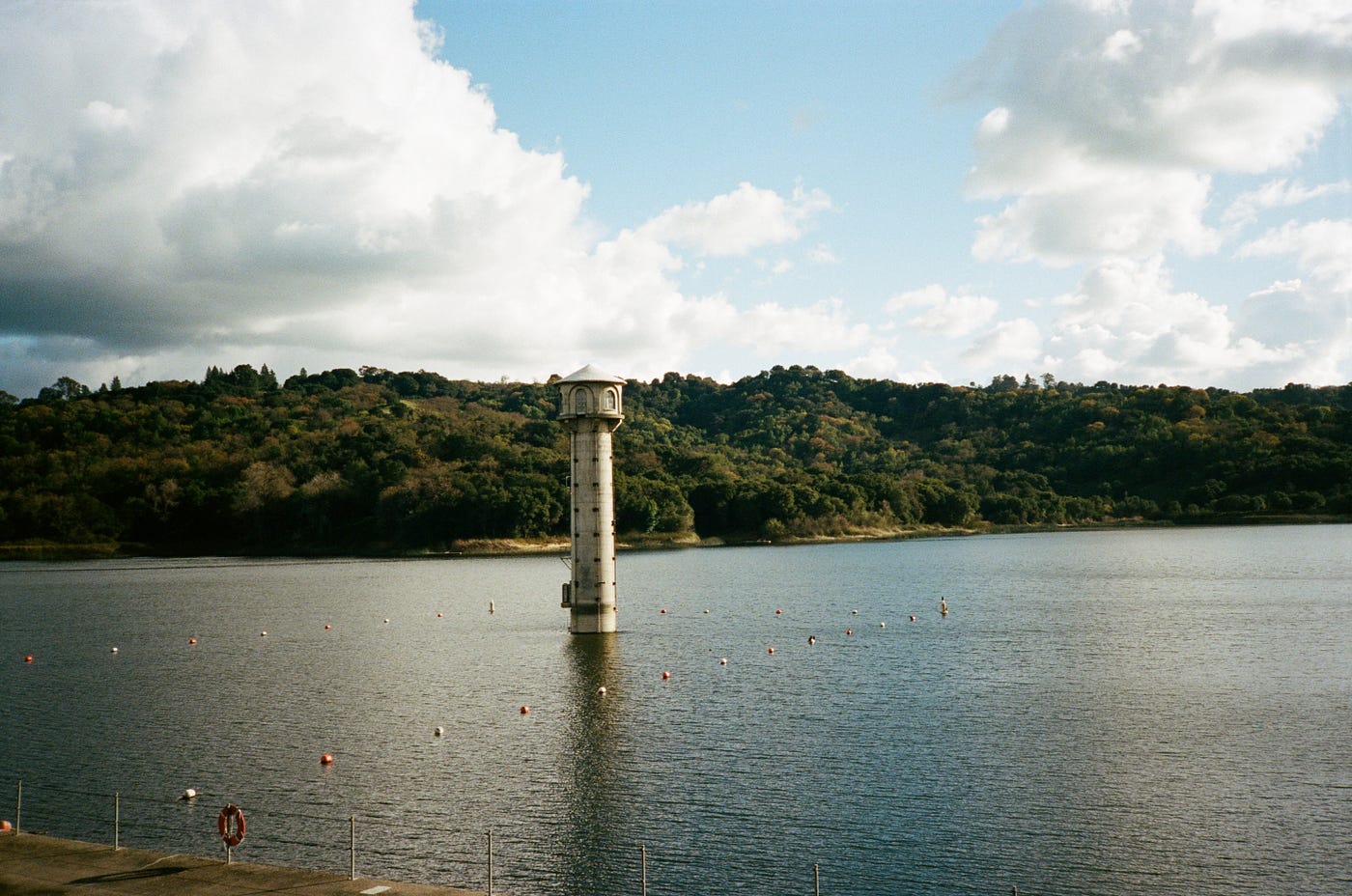
It'southward also a wonderful street shooter, rendering total scenes and colors beautifully.
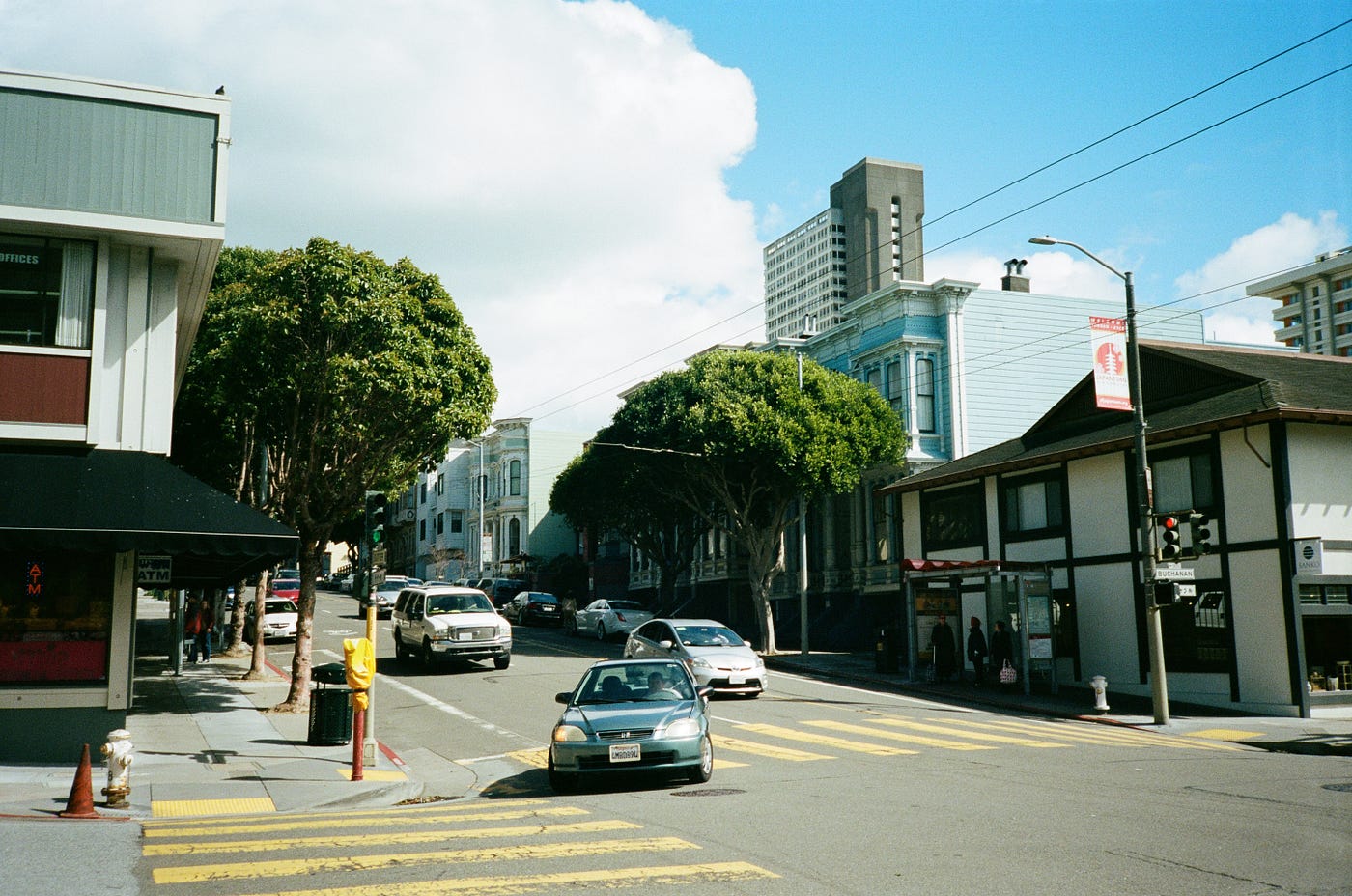
For photojournalistic work, it lends a certain drama to even ordinary subjects. Here's a solar panel on a lite pole in New Jersey. It looks a lot more distinctive and interesting shot on the L35AF.
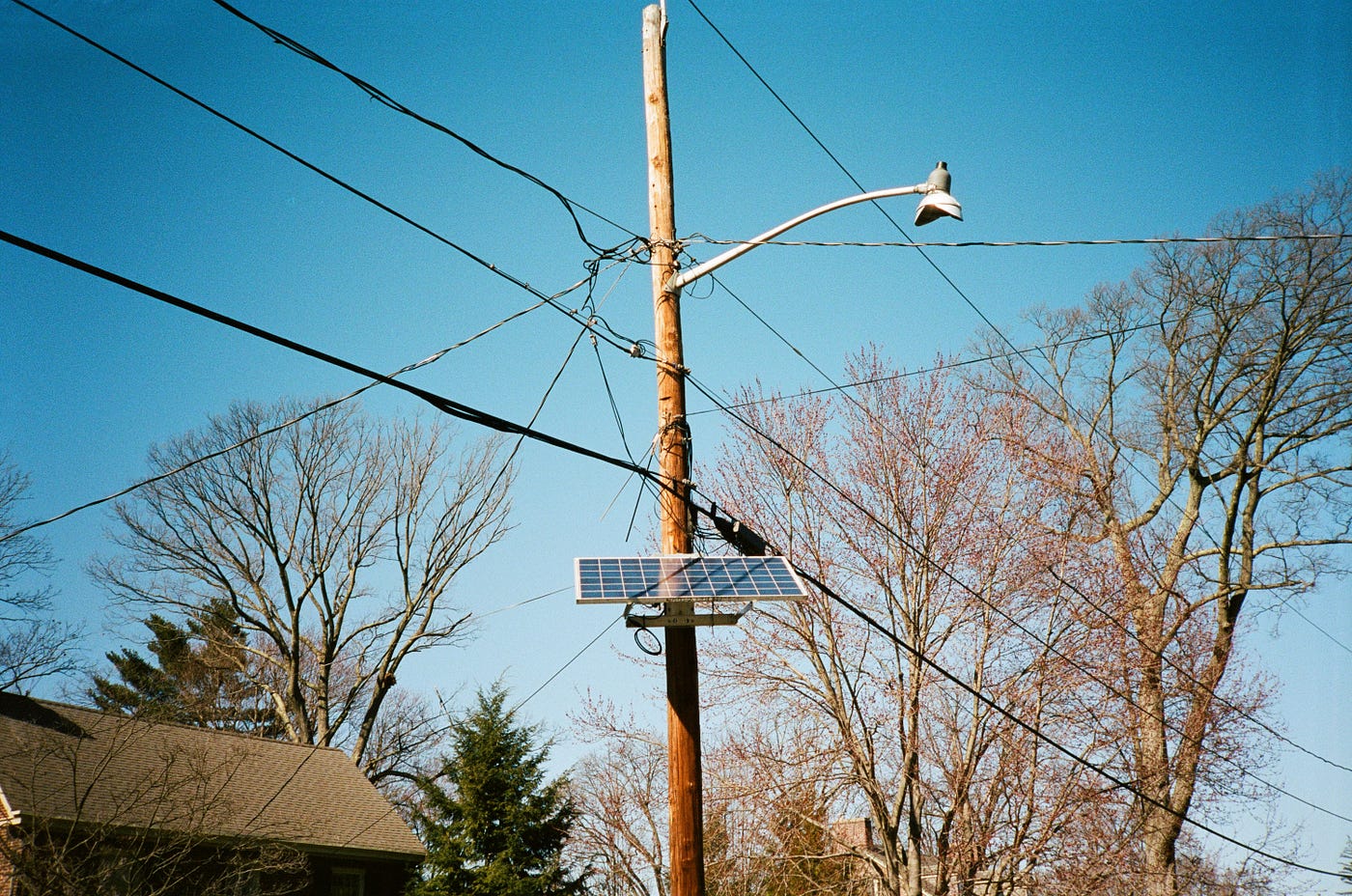
The same is truthful of otherwise basic scenes. This shot of Emerald Park in Dublin, California would be pretty bones if I took it on my Samsung phone, but I love the mode the L35AF has rendered the different shades of the grass, and the dramatic curvation of the concrete path.

It also handles flare admirably for a point and shoot. That brilliant 35mm lens does really well shooting right into the sun when capturing this home in New Jersey.
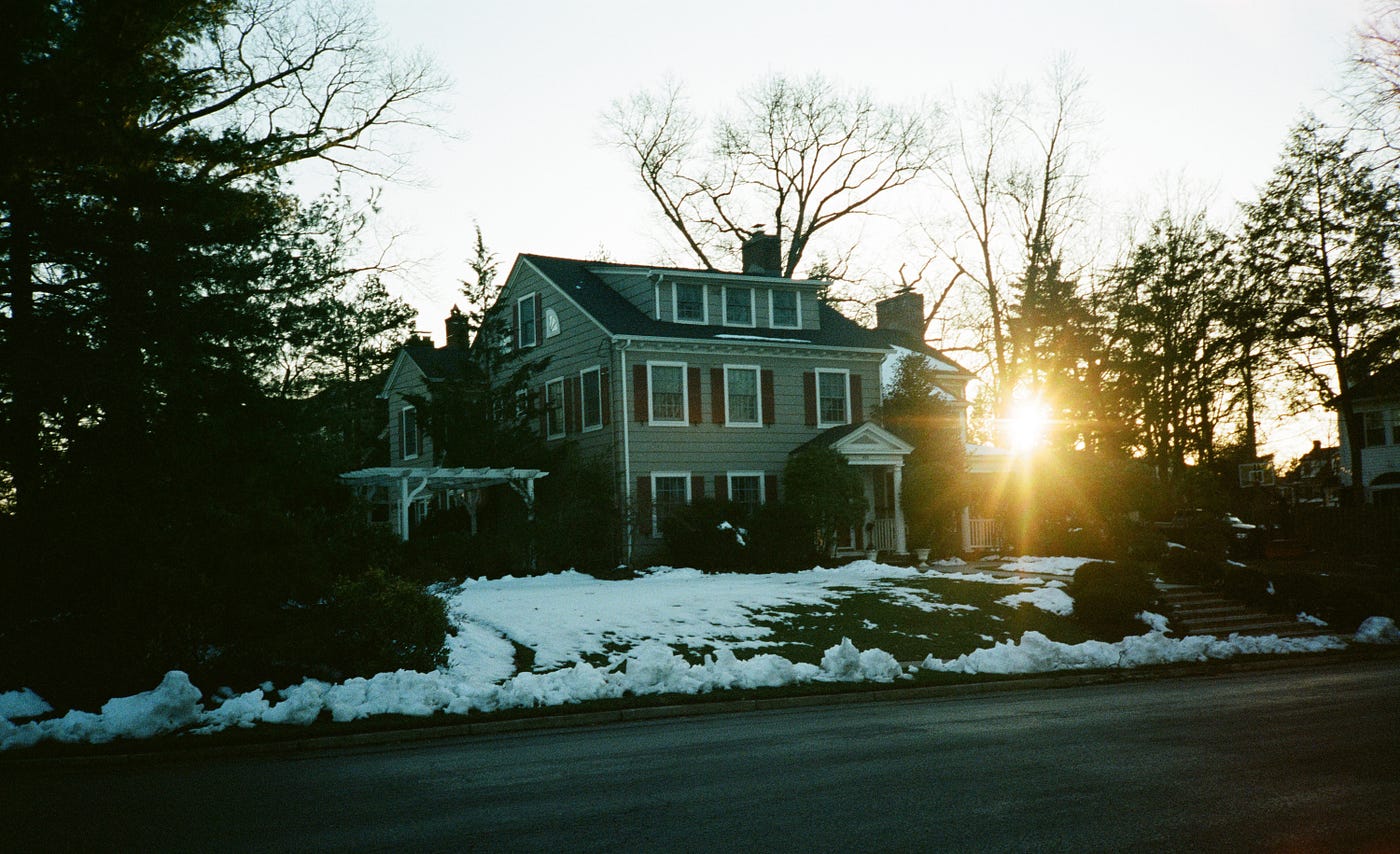
And it fifty-fifty handles black and white picture extremely well. The contrastyness and sharpness of the lens is a great fit for a film like this FP4.
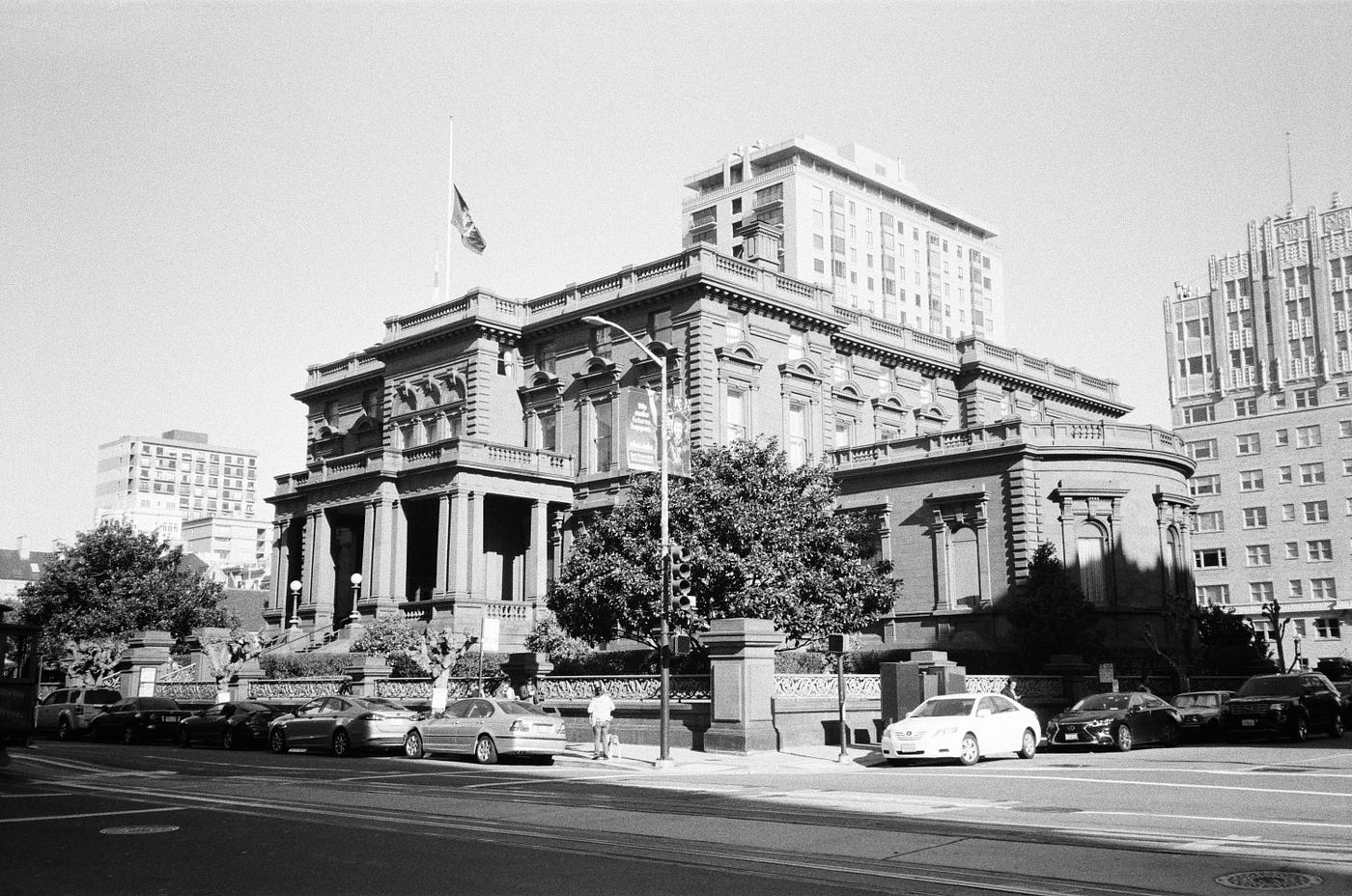
The other reason to utilize the L35AF? The price.
Unlike vintage cameras which have developed a cult following and go for $500+, the L35AF is relatively unknown. Yous can get a mint status one on Ebay for $150-$225. That makes it a cracking buy and a not bad camera to use, despite the flaws with the battery door and wink.
I know I'm supposed to like the MJU 2 the best of all my compact camera. It'due south a great camera to be sure, is very pocketable, was used by prominent photographers, etc.
But when I think of the point and shoot that I'thousand nearly excited to use, I go along coming back to the L35AF. I love the style it lends to my photos, and the slight, subtle ways that it transforms a scene — peculiarly working with the right emulsion — without altering information technology. It's got something akin to the Leica Look that I seek in my digital work, with about i/30 of the price tag.
If you lot run into a risk to grab your own L35AF, definitely check it out. It's a fantastic buy for the price, and it just might become ane of your go-to film cameras, too.
You finished this story, so you lot'll desire to join my newsletter , which is gratuitous and really very adept.
Source: https://thegrainmagazine.com/the-nikon-l35af-still-brilliant-after-37-years-cd7e156912cb
Posted by: tedderdiecaut.blogspot.com

0 Response to "What Was Nikon's First Autofocus Camera"
Post a Comment